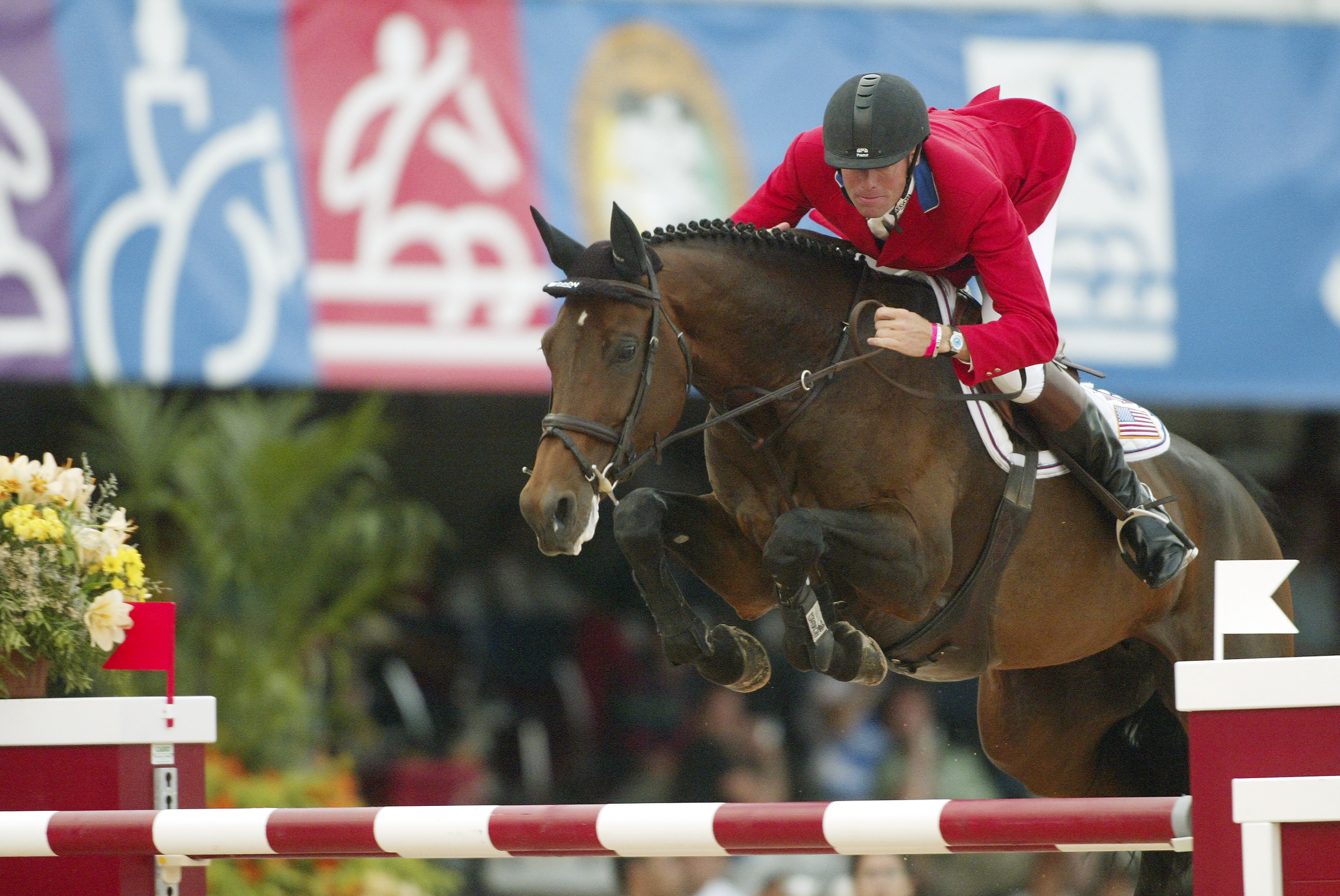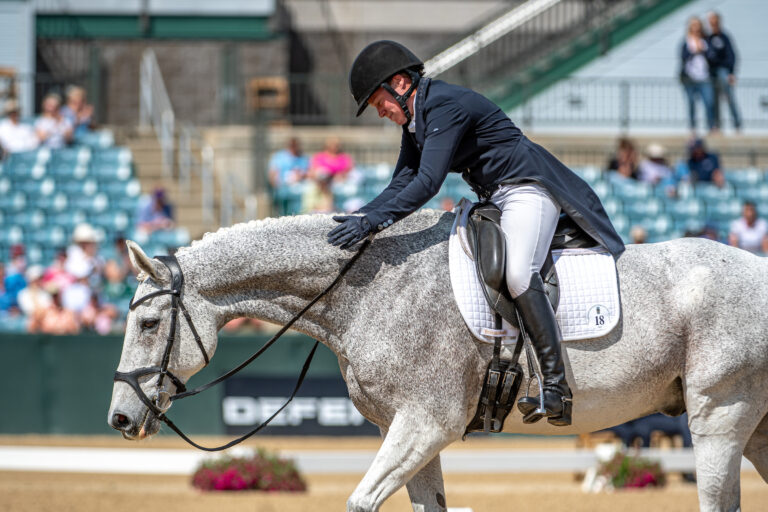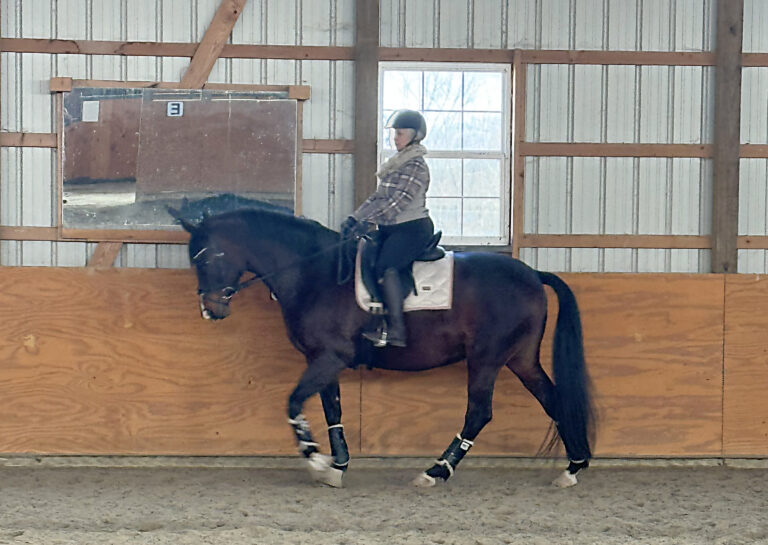
Here’s an obvious fun fact: Riding your horse often includes a lot of time watching other people ride their horses. This can be a bonus because if you are like many athletes, you may consider yourself to be a visual learner. You remember things you see, you gain understanding by watching someone capable perform and you appreciate demonstrations because they build your belief in what is possible. Make no mistake about it, observation has almost unlimited potential to aid the development of both your mental and physical skills.
Peter Wylde: Visualization and Observation
Peter Wylde’s Olympic gold medal in show jumping and the wide range of successes throughout his career reflect his consistent attention to detail and mindfulness in preparation. He uses visualization as part of his personal process, and it is something he encourages his students to use. Peter understands that the skill of visualization is buoyed by observation, and in our recent conversation he discussed a terrific extension of the skill that includes watching in a specific, targeted way.
“One tool I have always used and I encourage my students to use is to visualize your round. Take a moment, pause, go over it in your mind, close your eyes if you need to and see yourself riding it really well. If you can see yourself doing it, it makes you relax that much more and helps you let go of anxiety.
“Another tool that I have used myself and I also do with students is I have them pick out, and I help them select, a favorite rider who rides well but also rides similarly to the way they ride [even if it’s in a different division]. We look for a body size, body style and position of a famous rider who is similar to the way they ride. I say to them, ‘Get videos and watch that rider ride. See the way that he does it and then picture yourself doing the same thing.’ I think that that really helps.
“I used to do it with Joe Fargis when I was a kid. I used to watch Joe and visualize Joe’s position and the way he rode around the course. I used to think, OK, this is what I want to achieve, this kind of riding. I think that is a really useful tool for all levels of riders.”
Peter’s choices here, visualization and specific, mindful observation, are powerful tools to use to build correct muscle memory, sharpen your concentration skills, keep you motivated and inspired as well as strengthen your psychological poise. Let’s discuss two powerful ways to actualize those ideas.
Watching with A Purpose
Although watching other riders happens often, let’s take this opportunity to discuss how to optimize your viewing time. Often the easiest places to watch are at your barn or at the horse shows you attend. Hopefully you are lucky enough to train and travel in circles full of riders you admire. If this is the case, terrific, but you may also want to seek out inspiration by watching the best of the best—and even more specifically a rider who exemplifies the skills you are working to achieve on your horse. Note that this may require creativity, research and online video access.
Take a moment to choose one or two top riders now who you see at your barn, at shows or online. Do you admire their softness and balance? Or perhaps the way they stay calm, cool and collected under pressure? Do you seek out their videos on YouTube to inspire and motivate you to work hard on your goals? Do you make sure to get up to the ring to watch them compete or watch them ride in their Saturday lesson? If so, great job! Now let’s discuss two key applications involved in this type of specific, targeted observation: active observation and the outside-in principle.
Active Visualization
Usually visualization is something you practice in your own mind through creating a vivid, controlled scene and experience. However, there is a hybrid of visualization that is very powerful. Active visualization is a way to watch while pretending you are the person you are observing. In fact, you have probably seen trainers do this unconsciously. They rode along with their student as they stood watching from the in-gate of the show ring. They may have leaned forward as the rider left the ground at a jump or stretched up and lifted their hand ever so slightly when their student needed to half-halt.
The key to this strategy is to engage your whole body as you watch. You want to identify with the rider’s situation to the extent that you react to what you are seeing in the moment. Instead of passively watching like a neutral audience member eating popcorn and leaning back in your chair, use your creativity and imagination to be more active during this process. You will be aided by sitting in a neutral position to observe. Sit with both feet flat on the ground, balance evenly on both seat bones and maintain a tall, balanced posture over your seat bones. Your muscles will be more receptive and available to react to what you are watching, thus giving you high quality, simulated practice.
Active visualization will have the added benefit of strengthening your mind–body connection. You will be practicing allowing an image to trigger physical responses in your body. This is good! It is deepening your ability to use this synthesis at will. Remember that visualization is a skill like any other—the more ways you train and develop it, the better it will serve you.
The Outside-In Principle
Earlier you chose a top rider who embodies the skills and goals you are working on when you ride your horse. Let’s say you chose a rider named Alicia. As you picture Alicia in your mind’s eye now you may think, I wish I had Alicia’s poise; she always looks so elegant and soft. Her strength looks effortless and yet rock solid at the same time. This is the moment you want to capture like a firefly in a jar. In the brief period you reflect on what you appreciate about her style, your whole body is listening attentively. Use the moment to paint a vivid picture in your mind of Alicia’s position and imagine what it would feel like to ride like she does. By using your imagination to create that vision, you are enabling your body to figure out how to possess the same skills. Complete the strategy by putting your body in the same position (your “outside”) to generate the same skills or psychological mind-set (the “inside”).
The outside-in principle can help you ride with heightened technical skills as well as build the emotional strength you need to achieve your goals, depending on what you choose to concentrate on when you use it.
- Use the Outside-In Principle to Build Technical Skill
Find one or two riders to watch who exemplify the physical skills you are striving to attain. Their expertise can be both inspiring and instructional. For example, you may be trying to build a habit of keeping your hands more in front of your body. You can watch an elite rider who has beautifully placed, still hands to help you memorize the position and then file that memory like saving a picture to your laptop. Focus on those images in your mind the next time you ride and let them guide your hands into position.
- Use the Outside-In Principle to Build Psychological Poise
When you see someone’s posture, facial expression and behavior, you unconsciously imagine her thoughts and feelings (confidence, focus, calm, energy, positivity, etc). Therefore, when you act like that rider and hold your body in a similar position—by viewing her in your mind’s eye and then putting yourself in her shoes—you trigger the psychological response you associate with her in that moment.
- Blend Physical and Mental Goals
When using the outside-in principle, you ideally will choose a rider to emulate who has both the physical skill and psychological strength you are striving for to get the most bang for your buck. To demonstrate how powerful this can be, do the following at-home exercise:
1. Think about a specific performance goal you are currently working on. For example, perhaps you are working on keeping your arm soft and elbow relaxed at the canter.
2. Choose a rider you admire who beautifully and consistently possesses that skill and flash the image of her in front of your mind’s eye.
3. Next, imagine you are that rider effectively utilizing that skill. Visualize the scene—imagine you are cantering smoothly around the ring. How does it feel to be her? Enjoy the sensation of smoothly accomplishing your specific goal.
4. Now consider the goal again. What do you notice? Do you feel more prepared to go after it? Does the skill feel more attainable?
So the next time you are waiting your turn in your lesson or watching a big class at a horse show, remember that observing other riders can be a highly valuable part of your preparation and skill development. Spend some time strategically and intentionally following the steps above, and you will be well on your way.
This article was originally published in the July 2017 issue of Practical Horseman.











